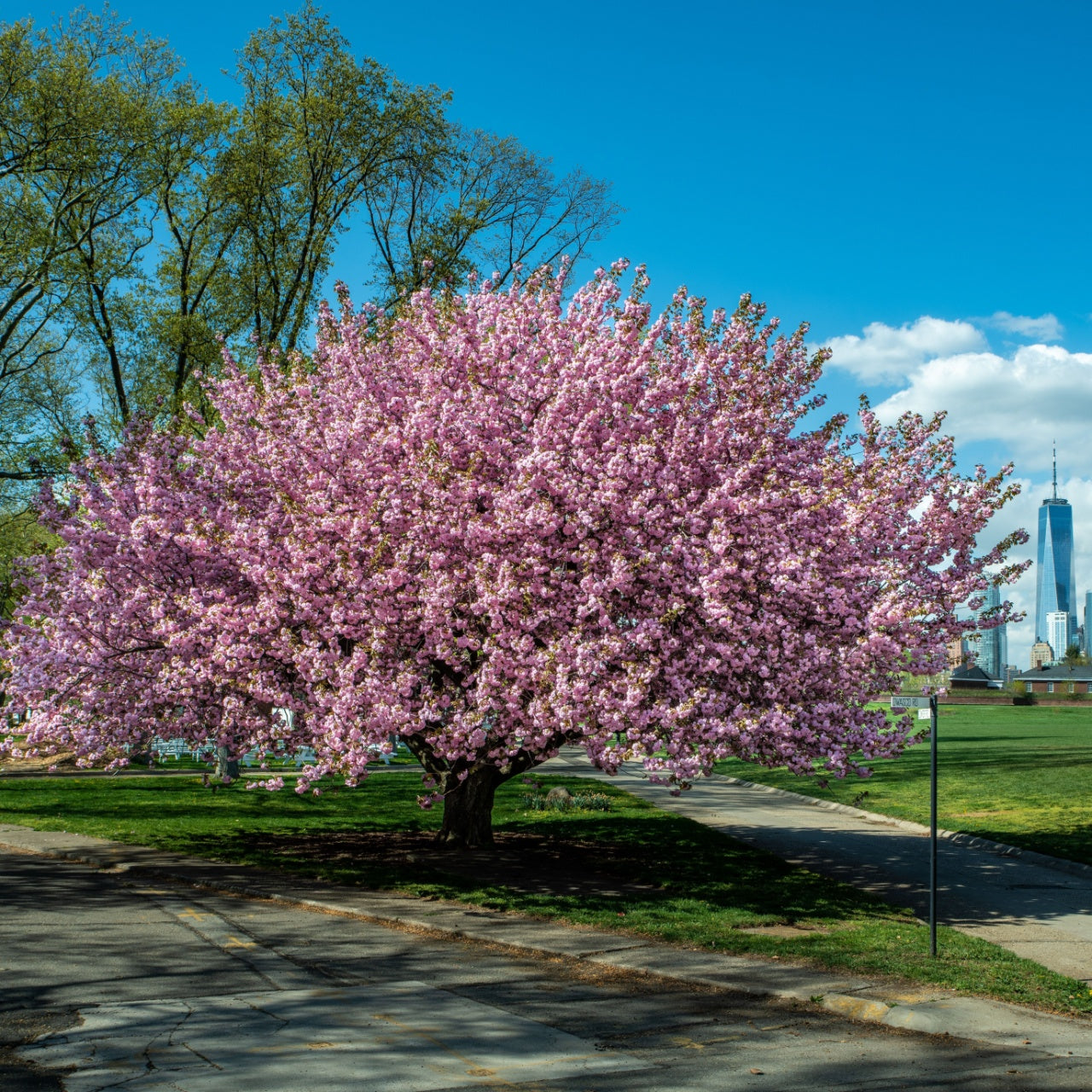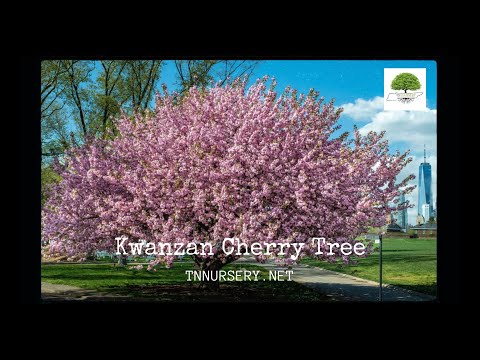Kwanzan Cherry Trees For Sale
The Kwanzan Cherry Tree is prized worldwide for its heavy pink spring blooms. Throngs of tourists from every corner of the world make their way to Japan every spring for the Cherry Blossom Festival, where they can witness the magic of a sky filled with pink and white flowers in person.
These trees are often planted alongside the Yoshino Cherry Tree, whose white blooms complement the Kwanzan’s bright pink ones. These trees are native to east Asia but can thrive in many subtropical or temperate climates in the middle latitudes.
Kwanzan Cherry Tree Details (Prunus serrulata)
Family: Rosaceae
Light Requirement: Full sun, partial shade
Water Needs: Light - Moderate
Height: 25-36 ft
Spread: 25-30 ft
Growth Rate: Moderate
Soil Preference: Moist, well drained, sandy, clay, loamy
Season of Interest: Spring
Flower Color: Pink
Fruit: Black drupes
Wildlife Value: Bees, Butterflies
Why Choose the Kwanzan Cherry Tree?
The Kwanzan Cherry Tree is one of many varieties of cherry tree whose blossoms are prized. They can be identified by its bright pink, fluffy, double flowers held in pendant clusters.
These flowers emerge before the leaves come out, which are lovely in their own right. The summer brings the muted green leaves to the front, which are tinged with pink along their veins. They have large, wart-like glands on the petiole (the joint stalk of the leaf to the stem) which resemble spider eyes.
How to Care for the Kwanzan Cherry Tree
Kwanzan Cherry Tree has a vase-like shape when young, and as it matures it grows into a rounded shape with stiffly ascending branches helping it spread almost as wide as it grows high. The magnificent sprawl of its fluffy, fragrant flowers is something to consider when planting in your yard or garden.
This tree is well worth being a part of your garden scape because its heavenly blossoms simply cannot be missed.

Exposure
The Kwanzan Cherry Tree thrives in full sun to partial shade. For optimal blooming and health, it prefers at least six hours of direct sunlight daily. In shadier locations, it may have reduced flowering and growth.
Height at Maturity
Under 25 Feet
Usage
Fruit
Shipped As
Ships
UPS
Planting Zones
5-9




